Power Supply and Control Unit for Actively Heated Protective Clothing with Photovoltaic Energy Harvesting
Abstract
:1. Introduction
2. System Architecture and Components
2.1. Complete System Structure
2.2. Control Module with Sensors
- On power-up, the system initializes all the necessary subsystems.
- After the initialization process, the system checks which sensors have been connected. If a measuring device is detected, the respective connection is initialized and the sensor is calibrated.
- After the sensors are initialized, the system enters a loop with a period of 0.05 s. The collected data can be divided into two groups related to separate Bluetooth transmission services: PEP (Physiological and Environmental Parameters) Service and IMU (Inertial Measurement Unit) Service. The PEP service collects data and sends them to the mobile device every 20th loop iteration (once per second). The IMU service gathers data every loop iteration (20 times per second) and sends a frame containing 10 measurements every 10th loop iteration (twice per second). Additionally, the collected data can be saved on the SD card.
- Simultaneously with reading data from sensors, but asynchronously, the system is ready to receive heating pad settings from the mobile device.
2.3. Bluetooth Interface
- PEP Service: it is responsible for collecting all the data related to the user’s physiological parameters and environmental parameters.
- IMU Service: it deals with data from a three-axis position IMU.
- Heating Service: it is used to set the power of the heating pads.
- Settings Service: it deals with information provided by the battery charge monitor as well as the total output current, the battery charging current, and the power supply block status.
2.4. Power Supply Module
- An MPC (Main Power Converter), which is a synchronous buck converter regulating the heating pad supply voltage at the required level Uout;
- Seven MOSFET low-side switches with their gate drivers for the low-frequency PWM control of the heating pads;
- A control module supply voltage pre-regulator (a buck converter);
- A battery pack charging converter, which is a buck-boost converter with an MPPT (Maximum Power Point Tracking) function intended for PV modules (connected in parallel via a setup of five Schottky diodes).
3. System Power Requirements and Energy Budget
3.1. Control Module Power Supply Requirements
3.2. Bluetooth Interface Power Supply Requirements
- The transmission occurs twice per second for the IMU Service (whose packet length is 135 bytes), once per second for the PEP Service (62 bytes), and once per second for the Setting Service (35 bytes), with an average current during transmission of 7.5 mA;
- The asynchronous data reception by the Heater Service (20 bytes) takes place once per 5 s in the worst-case scenario, with an average current of 5.8 mA;
- The BLE module requires a current of 0.002 mA in its idle state;
- The supply voltage of the BLE controller is 3.0 V, and the average power consumption by the BLE module is 47 µW.
3.3. Heating Power Requirements
3.4. Overall Energy Budget
4. Main Power Converter Power Loss Model
4.1. Model Concept and Implementation
- (1)
- It requires both a short time step to represent semiconductor device switching and a long observation time to reach both an electrical and a thermal steady state;
- (2)
- Solutions must be obtained for many combinations of the operating parameters (input voltage will vary as 1:1.8 due to battery discharging and the load may vary as 1:0.028 as a result of heater power adjustment);
- (3)
- The extraction and structuring of output data are troublesome, as these involve multiple quantities that have to be averaged over the switching period.
4.2. Simulation Results and Experimental Validation
- An Itech IT6942A laboratory power supply;
- A Chroma 63103A programmable electronic DC load;
- Four Sanwa PC510a multimeters.
5. Power Sources
5.1. Heating Pad Energy Demand
5.2. Battery Pack Selection
5.3. PV Module Set Configurations
6. PV Generator Configuration
6.1. Static Testing Methodology
- A Photovoltaik Engineering PVPM 1000C PV module curve tracer with an SOZ-03 solar radiation sensor;
- A Chroma 63103A programmable electronic DC load;
- Five Sanwa CD772 multimeters (operating in the ammeter or the voltmeter mode);
- A custom-made PCB with four Schottky diodes of the same type as those found at the input of the battery pack charging converter included in the system, assuring that the electrical operating conditions of the PV module set connected with the electronic load are consistent with those occurring in the actual system.
- (1)
- Measuring the current-voltage characteristic of the PV module set as a whole using the curve tracer, and determining the MPP location of the set;
- (2)
- Loading the PV module set with a constant voltage provided by the electronic load, corresponding to the MPP as determined in phase (1), and measuring the currents supplied by the individual PV modules using multimeters.
6.2. Static Test Results
- In the backpack option 1 configuration (two modules on each side), the modules on the side oriented towards the Sun provided most of the power for the azimuthal angles of 90° and 135°, and a significant part of it for 45°;
- In the backpack option 2 configuration (one module on each side), the top module provided most of the power for the azimuthal angles of 90° and 135°;
- In both backpack configurations, for the azimuthal angles of 0°, 45°, and 180° most of the power was provided by the module at the back of the backpack;
- In the jacket configuration, most of the power was provided by the module on the back for the azimuthal angles of 0° and 45°, the module on the side oriented towards the Sun for 90° and 135°, and the module on the front for 180°;
- In both configurations involving the rollable sheet, the power rapidly decreases with the azimuthal angle increasing, especially above 45°.
- The jacket is the most versatile configuration, generating a significant power for any azimuthal angle of the silhouette; when compared to the backpack option 1 configuration, the output of the jacket configuration was similar for the azimuthal angles of 0° and 45°, lower for 90°, and greater for 135° and 180°;
- The backpack option 2 configuration generated more power than option 1 and usually more than the jacket configuration (excepting for 135° and 180°);
- Both the flat and curved rollable configurations generated more power than any other configuration for 0° and 45°, but less than those for all the remaining angles;
- The curved rollable configuration always generated the same or higher amount of power than the flat rollable one, with a difference in average power of 8.6%.
6.3. Tests in Real Use Conditions
- (1)
- (2)
- Curved rollable vs. jacket under full overcast conditions (Figure 16b).
7. Discussion
8. Conclusions
Author Contributions
Funding
Informed Consent Statement
Data Availability Statement
Conflicts of Interest
References
- Gerbing Heated Clothing. Available online: https://www.gerbing.com (accessed on 29 May 2022).
- Milwaukee® Tool Official Site. Available online: https://www.milwaukeetool.com/tools/cordless-tools/heated-gear/m12-cordless-black-heated-jacket-kit/2345 (accessed on 29 May 2022).
- DEWALT® Power Tools Official Site. Available online: https://www.dewalt.com/products/storage-and-gear/safety-and-protective-workwear (accessed on 29 May 2022).
- Nordic Heat. Available online: https://nordic-heat.com/ (accessed on 29 May 2022).
- Heated Clothing|Coat Heater|Heated Insoles|DIY Heated Jacket. Available online: https://anseris.com/ (accessed on 29 May 2022).
- Dąbrowska, A.; Bartkowiak, G.; Pękosławski, B.; Starzak, Ł. Comprehensive evaluation of a photovoltaic energy harvesting system in smart clothing for mountain rescuers. IET Renew. Power Gener. 2020, 14, 3200–3208. [Google Scholar] [CrossRef]
- Pękosławski, B.; Starzak, Ł.; Dąbrowska, A.; Bartkowiak, G. Evaluation methodology of a smart clothing biomechanical energy harvesting system for mountain rescuers. Sensors 2021, 21, 905. [Google Scholar] [CrossRef]
- Hashemi, S.A.; Ramakrishna, S.; Aberle, A.G. Recent progress in flexible–wearable solar cells for self-powered electronic devices. Energy Environ. Sci. 2020, 13, 685. [Google Scholar] [CrossRef]
- Páez-Montoro, A.; García-Valderas, M.; Olías-Ruíz, E.; López-Ongil, C. Solar energy harvesting to improve capabilities of wearable devices. Sensors 2022, 22, 3950. [Google Scholar] [CrossRef] [PubMed]
- Ostfeld, A.; Gaikwad, A.; Khan, Y.; Arias, A.C. High-performance flexible energy storage and harvesting system for wearable electronics. Sci. Rep. 2016, 6, 26122. [Google Scholar] [CrossRef] [Green Version]
- Mohsen, S.; Zekry, A.; Youssef, K.; Abouelatta, M. An autonomous wearable sensor node for long-term healthcare monitoring powered by a photovoltaic energy harvesting system. Int. J. Electron. Telecommun. 2020, 66, 267–272. [Google Scholar] [CrossRef]
- Jokic, P.; Magno, M. Powering smart wearable systems with flexible solar energy harvesting. In Proceedings of the 2017 IEEE International Symposium on Circuits and Systems (ISCAS), Baltimore, MD, USA, 28–31 May 2017; pp. 1–4. [Google Scholar] [CrossRef]
- Castillo-Atoche, A.; Caamal-Herrera, K.; Atoche-Enseñat, R.; Estrada-López, J.J.; Vázquez-Castillo, J.; Castillo-Atoche, A.C.; Palma-Marrufo, O.; Espinoza-Ruiz, A. Energy efficient framework for a AIoT cardiac arrhythmia detection system wearable during sport. Appl. Sci. 2022, 12, 2716. [Google Scholar] [CrossRef]
- Dionisi, A.; Marioli, D.; Sardini, E.; Serpelloni, M. Autonomous wearable system for vital signs measurement with energy-harvesting module. IEEE Trans. Instrum. Meas. 2016, 65, 1423–1434. [Google Scholar] [CrossRef]
- De Fazio, R.; Cafagna, D.; Marcuccio, G.; Minerba, A.; Visconti, P. A multi-source harvesting system applied to sensor-based smart garments for monitoring workers’ bio-physical parameters in harsh environments. Energies 2020, 13, 2161. [Google Scholar] [CrossRef]
- Bibbo, D.; Conforto, S.; Laudani, A.; Lozito, G.M. Solar energy harvest on bicycle helmet for smart wearable sensors. In Proceedings of the 2017 IEEE 3rd International Forum on Research and Technologies for Society and Industry (RTSI), Modena, Italy, 11–13 September 2017; pp. 1–6. [Google Scholar] [CrossRef]
- Başoğlu, M.E.; Üstek, S.M. Prototype development of a solar-powered backpack for camping applications. Gazi Univ. J. Sci. Part C 2021, 9, 589–596. [Google Scholar] [CrossRef]
- Taverne, J.; Muhammad-Sukki, F.; Ayub, A.S.; Sellami, N.; Abu-Bakar, S.H.; Bani, N.A.; Mas’ud, A.A.; Iyi, D. Design of solar powered charging backpack. Int. J. Power Electron. Drive Syst. 2018, 9, 848–858. [Google Scholar] [CrossRef]
- Bagci, F.S.; Kim, K.A.; Lin, T.-Y.; Liu, Y.-C. Power profile measurement and system design Analysis for a wearable photovoltaic application. In Proceedings of the 2020 IEEE 9th International Power Electronics and Motion Control Conference (IPEMC2020-ECCE Asia), Nanjing, China, 29 November–2 December 2020; pp. 1469–1474. [Google Scholar] [CrossRef]
- Leonov, V.; Torfs, T.; Vullers, R.J.M.; Su, J.; Van Hoof, C. Renewable energy microsystems integrated in maintenance-free wearable and textile-based devices: The capabilities and challenges. In Proceedings of the IEEE International Conference on Industrial Technology, Vina del Mar, Chile, 14–17 March 2010; pp. 967–972. [Google Scholar] [CrossRef]
- Brogan, Q.; O’Connor, T.; Ha, D.S. Solar and thermal energy harvesting with a wearable jacket. In Proceedings of the IEEE International Symposium on Circuits and Systems (ISCAS), Melbourne, Australia, 1–5 June 2014; pp. 1412–1415. [Google Scholar] [CrossRef]
- Satharasinghe, A.; Hughes-Riley, T.; Dias, T. A review of solar energy harvesting electronic textiles. Sensors 2020, 20, 5938. [Google Scholar] [CrossRef]
- infinityPV. Available online: https://infinitypv.com/ (accessed on 29 May 2022).
- PowerFilm Solar. Available online: https://www.powerfilmsolar.com/ (accessed on 29 May 2022).
- Mitter, C.S. Device considerations for high current, low voltage synchronous buck regulators (SBR). In Proceedings of the WESCON/97 Conference Proceedings, Santa Clara, CA, USA, 6 November 1997; pp. 281–288. [Google Scholar] [CrossRef]
- Brown, J. Modeling the switching performance of a MOSFET in the high side of a non-isolated buck converter. IEEE Trans. Power Electron. 2006, 21, 3–10. [Google Scholar] [CrossRef]
- Ren, Y.; Xu, M.; Zhou, J.; Lee, F.C. Analytical loss model of power MOSFET. IEEE Trans. Power Electron. 2006, 21, 310–319. [Google Scholar] [CrossRef]
- Xiong, Y.; Sun, S.; Jia, H.; Shea, P.; Shen, Z.J. New physical Insights on power MOSFET switching losses. IEEE Trans. Power Electron. 2009, 24, 525–531. [Google Scholar] [CrossRef]
- Kartsch, V.; Tagliavini, G.; Guermandi, M.; Benatti, S.; Rossi, D.; Benini, L. BioWolf: A sub-10-mW 8-channel advanced brain–computer interface platform with a nine-core processor and BLE connectivity. IEEE Trans. Biomed. Circuits Syst. 2019, 13, 893–906. [Google Scholar] [CrossRef] [PubMed]
- Ozkan, H.; Ozhan, O.; Karadana, Y.; Gulcu, M.; Macit, S.; Husain, F. A portable wearable tele-ECG monitoring system. IEEE Trans. Instrum. Meas. 2020, 69, 173–182. [Google Scholar] [CrossRef]
- Wong, D.L.T.; Yu, J.; Li, Y.; Deepu, C.J.; Ngo, D.H.; Zhou, C.; Singh, S.R.; Koh, A.; Hong, R.; Veeravalli, B.; et al. An integrated wearable wireless vital signs biosensor for continuous inpatient monitoring. IEEE Sens. J. 2020, 20, 448–462. [Google Scholar] [CrossRef]
- Mahmud, M.S.; Wang, H.; Esfar-E-Alam, A.M.; Fang, H. A wireless health monitoring system using mobile phone accessories. IEEE Internet Things J. 2017, 4, 2009–2018. [Google Scholar] [CrossRef]
- McLeod, K.; Spachos, P.; Plataniotis, K.N. Smartphone-based wellness assessment using mobile environmental sensors. IEEE Syst. J. 2021, 15, 1989–1999. [Google Scholar] [CrossRef]
- Erickson, R.; Maksimović, D. Fundamentals of Power Electronics, 2nd ed.; Kluwer: New York, NY, USA, 2001. [Google Scholar]
- Cavallaro, C.; Musumeci, S.; Pagano, R.; Raciti, A.; Shenai, K. Analysis modeling and simulation of low-voltage MOSFETs in synchronous-rectifier buck-converter applications. In Proceedings of the IECON’03. 29th Annual Conference of the IEEE Industrial Electronics Society, Roanoke, VA, USA, 2–6 November 2003; pp. 1697–1702. [Google Scholar] [CrossRef]
- Ostadi, A.; Kazerani, M.; Chen, S. Optimal sizing of the Energy Storage System (ESS) in a battery-electric vehicle. In Proceedings of the 2013 IEEE Transportation Electrification Conference and Expo (ITEC), Detroit, MI, USA, 16–19 June 2013. [Google Scholar] [CrossRef]
- Akpolat, A.N.; Yang, Y.; Blaabjerg, F.; Dursun, E.; Kuzucuoğlu, A.E. Li-ion-based battery pack designing and sizing for electric vehicles under different road conditions. In Proceedings of the 2020 International Conference on Smart Energy Systems and Technologies (SEST), Istanbul, Turkey, 7–9 September 2020. [Google Scholar] [CrossRef]
- Flashlight Information. Available online: https://lygte-info.dk/info/indexBatteriesAndChargers%20UK.html (accessed on 30 May 2022).
- Li, K.; Wei, F.; Tseng, K.J.; Soong, B. A practical lithium-ion battery model for state of energy and voltage responses prediction incorporating temperature and ageing effects. IEEE Trans. Ind. Electron. 2018, 65, 6696–6708. [Google Scholar] [CrossRef]
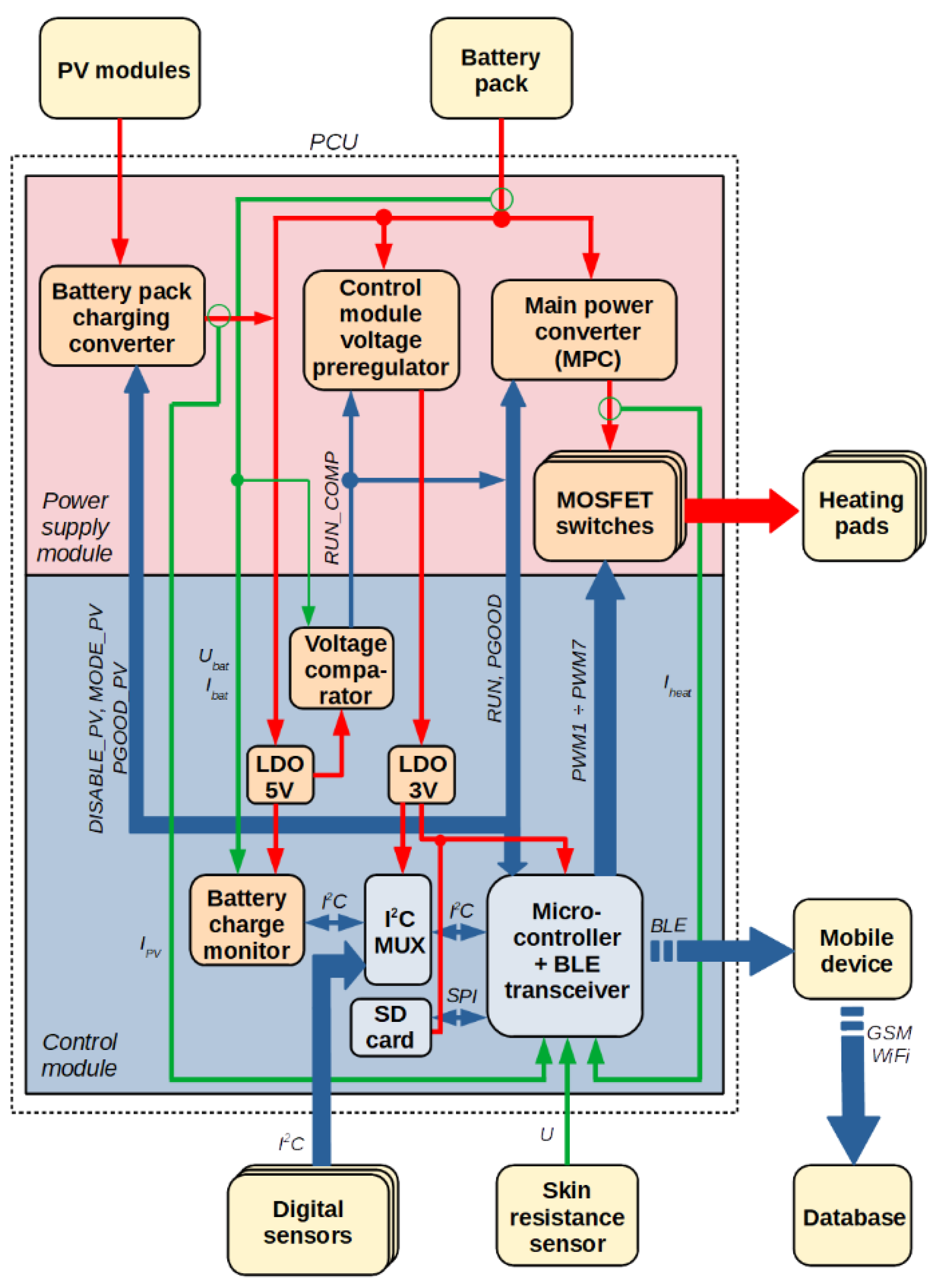
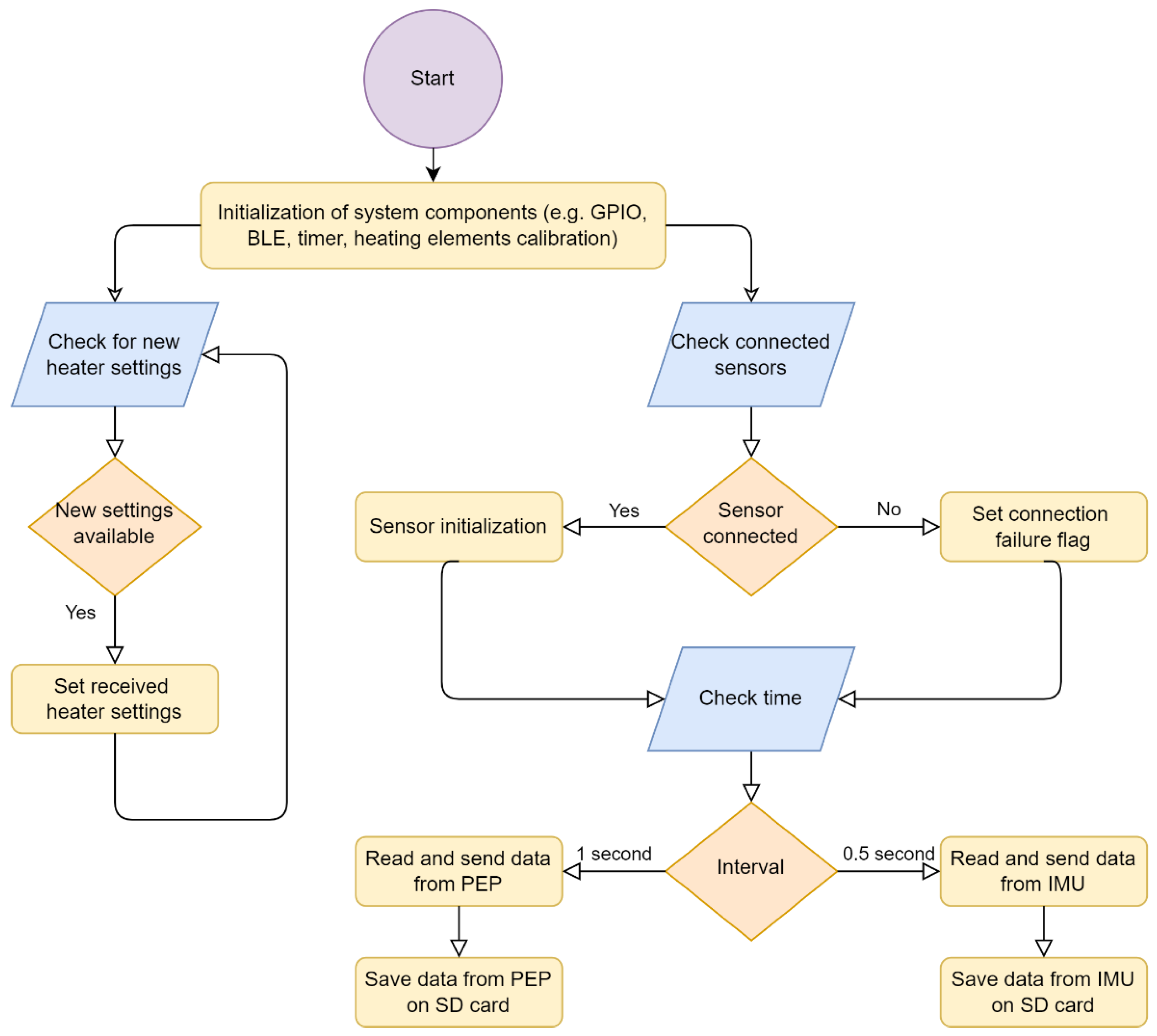
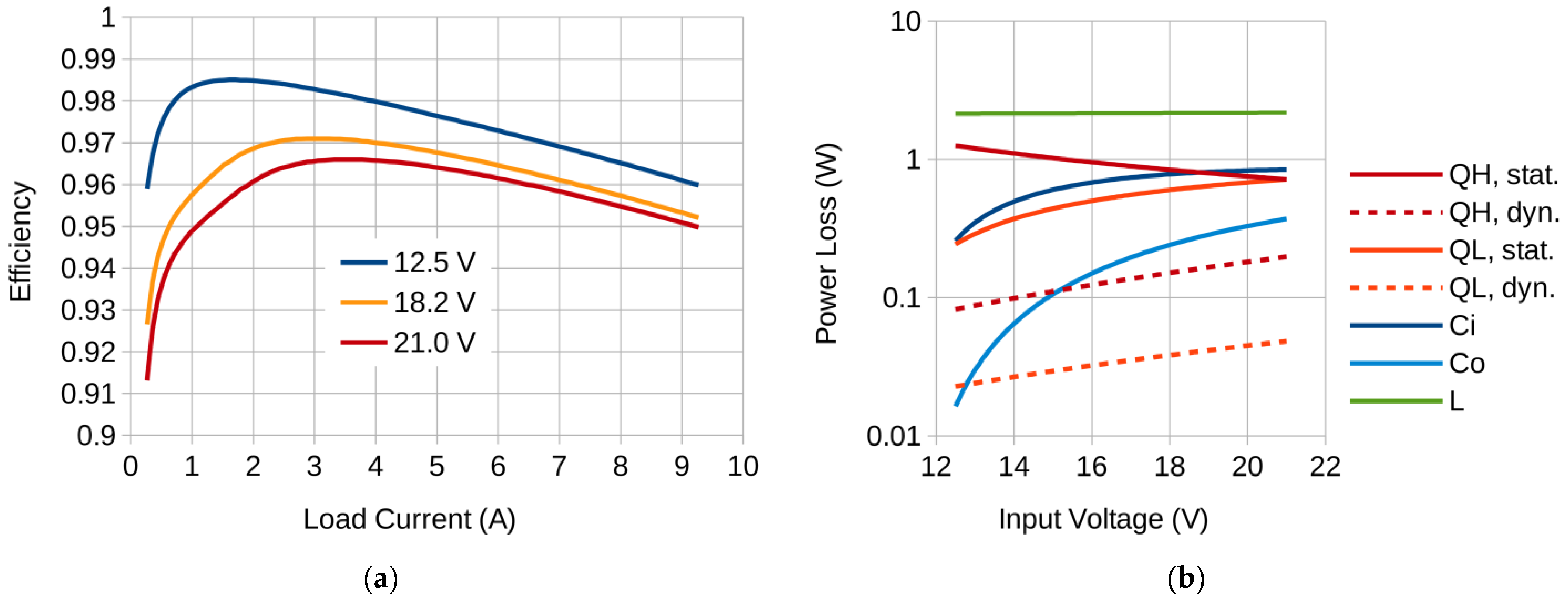
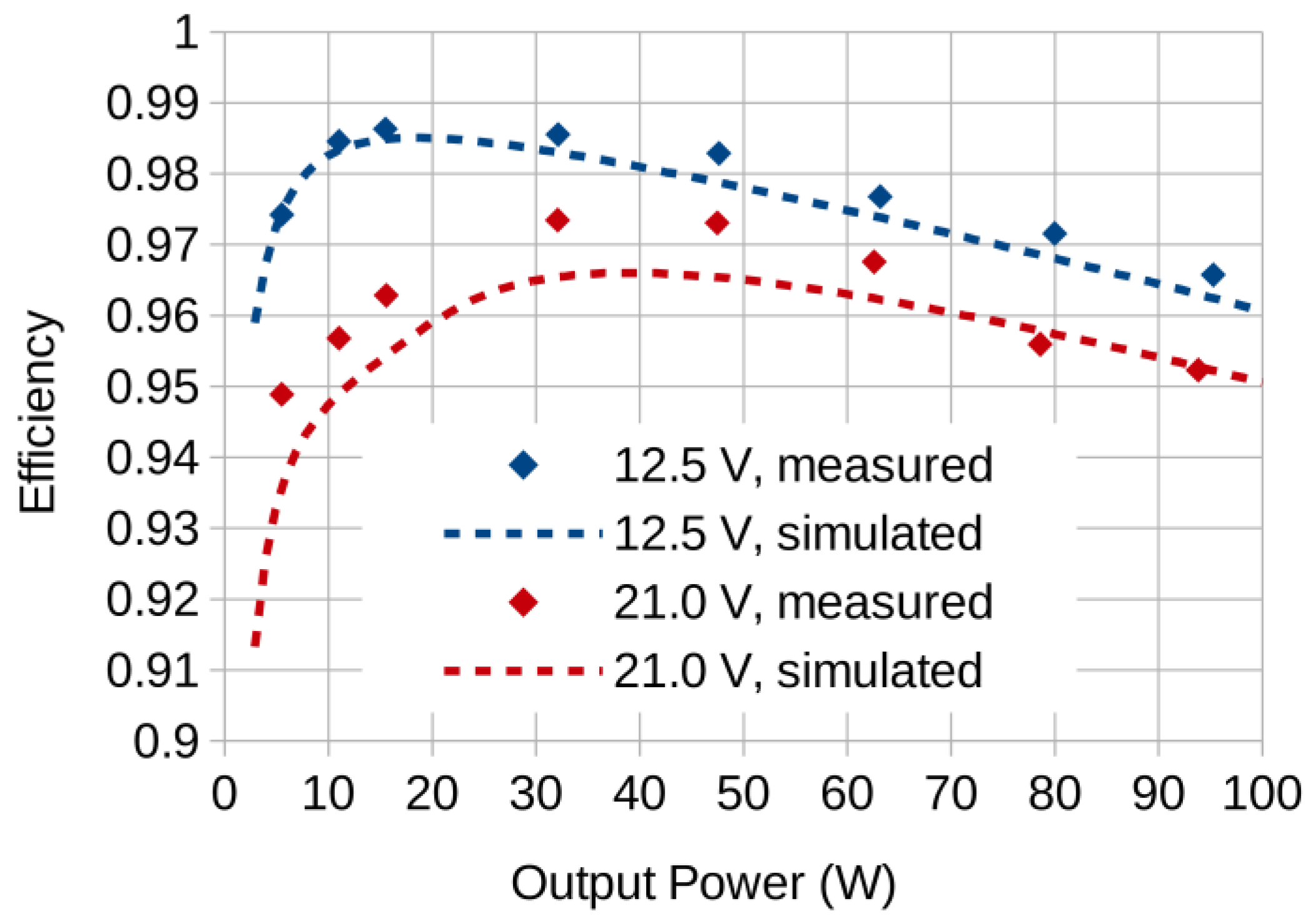
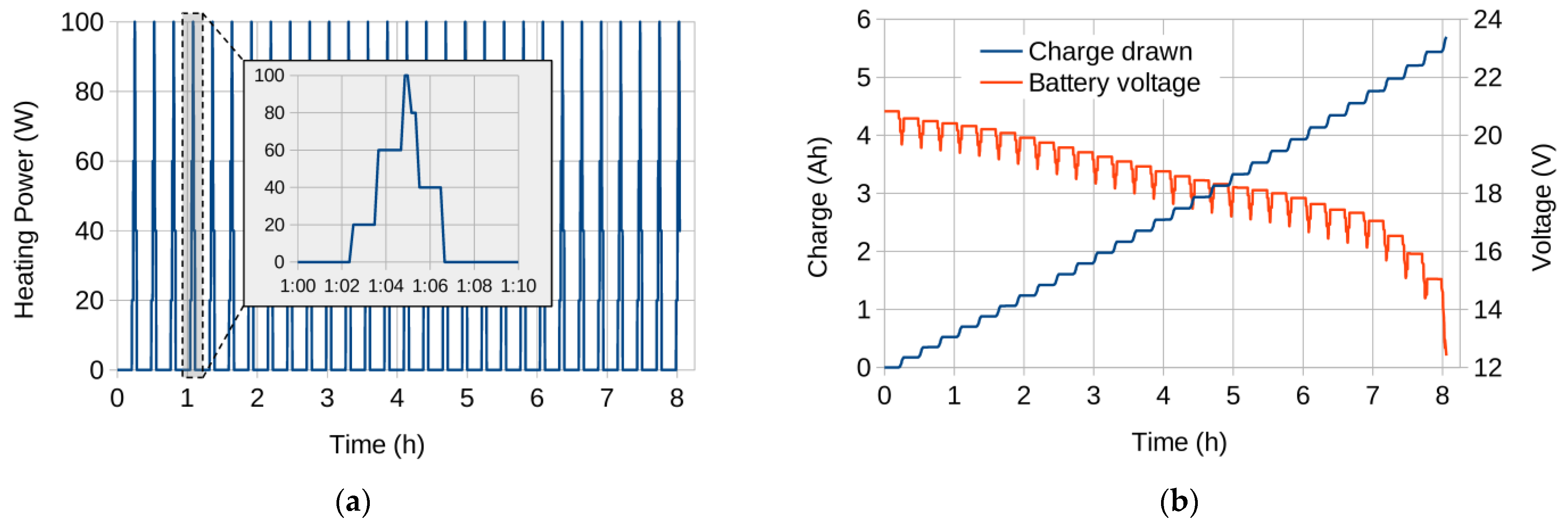


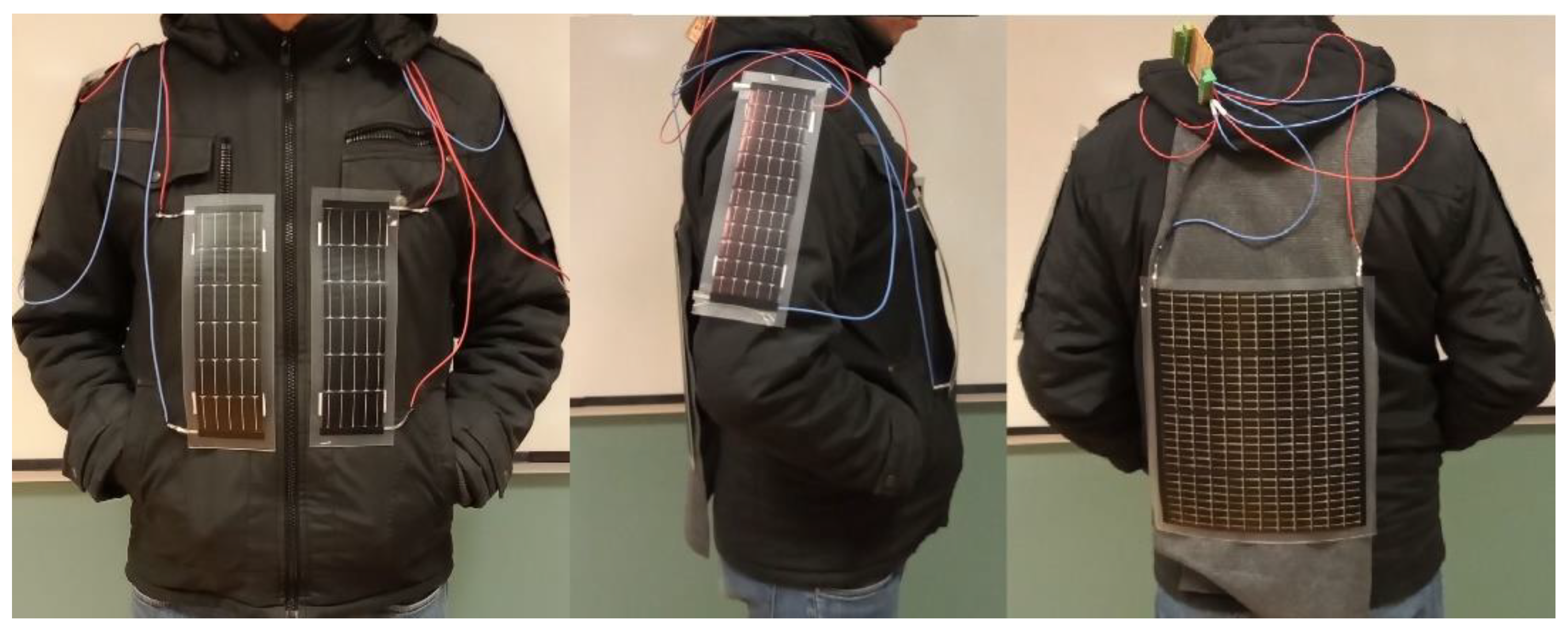
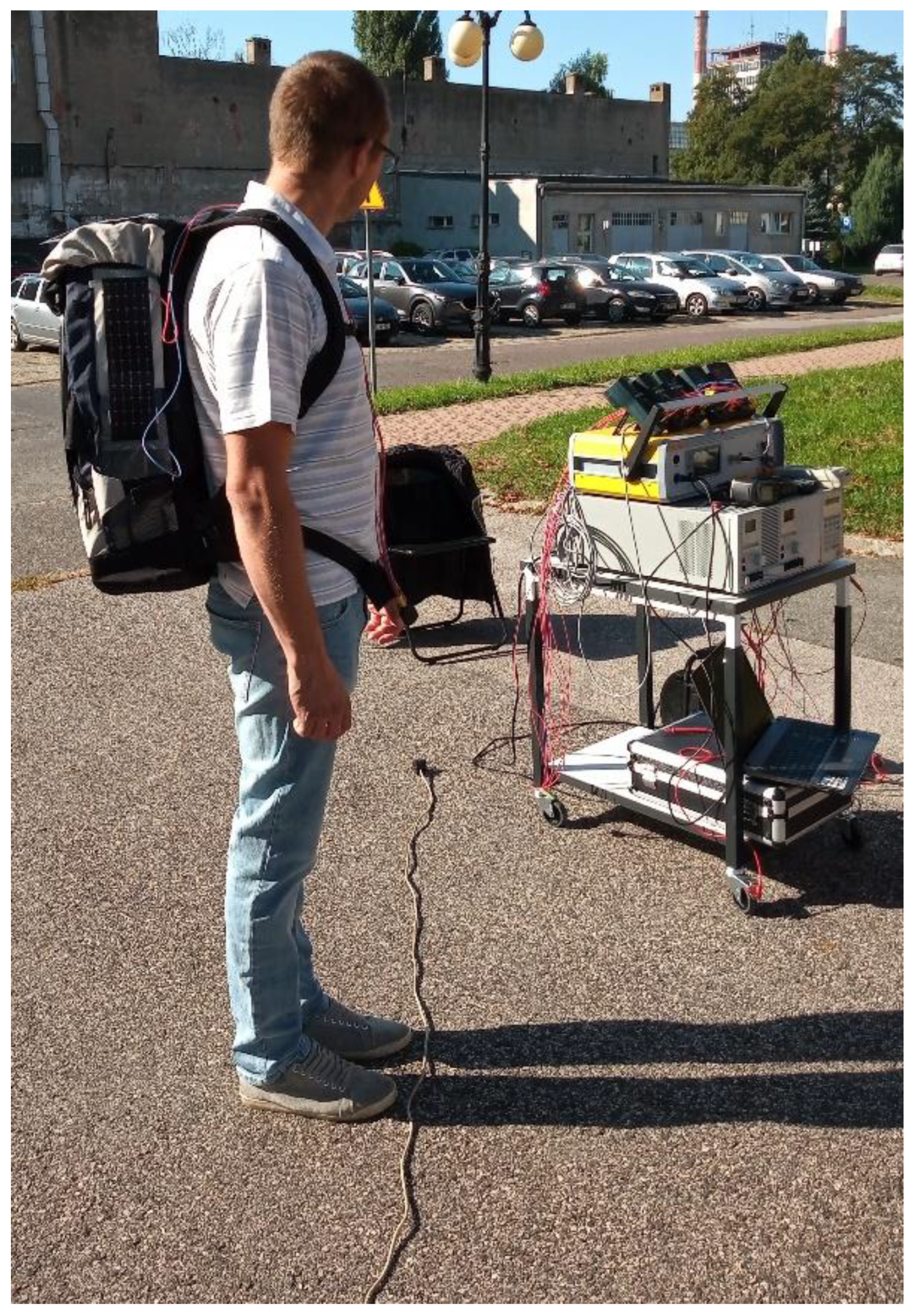
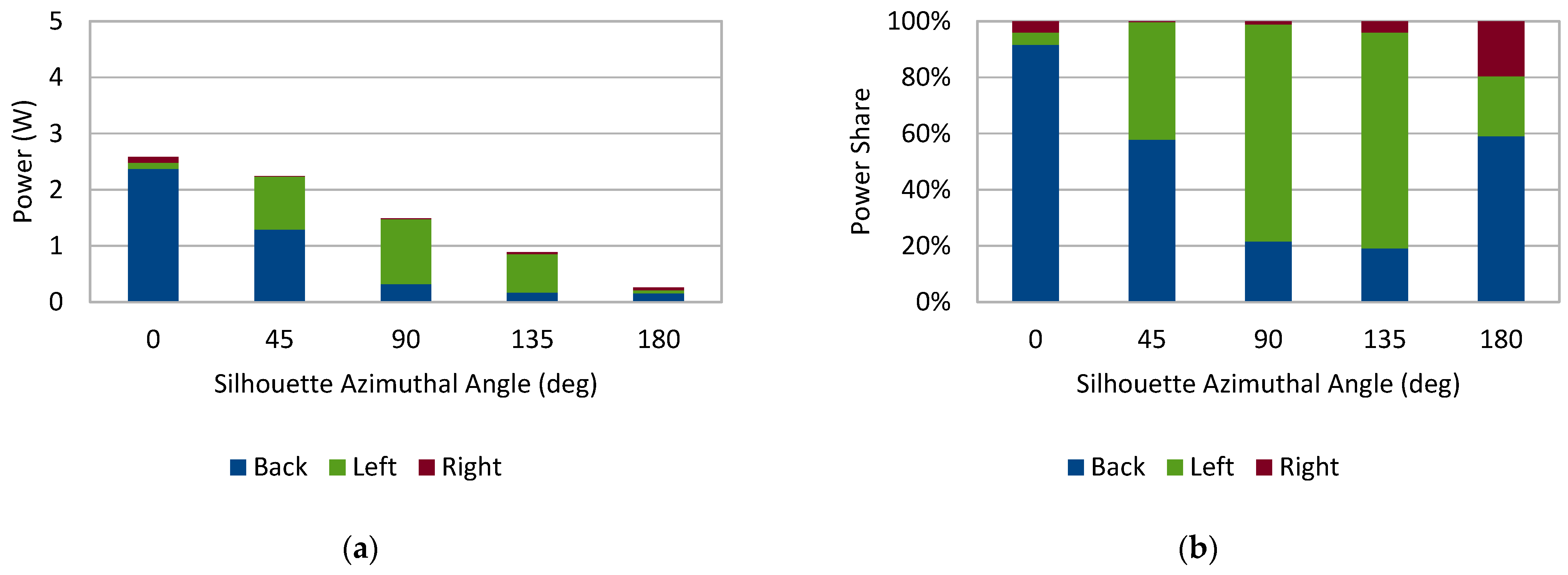

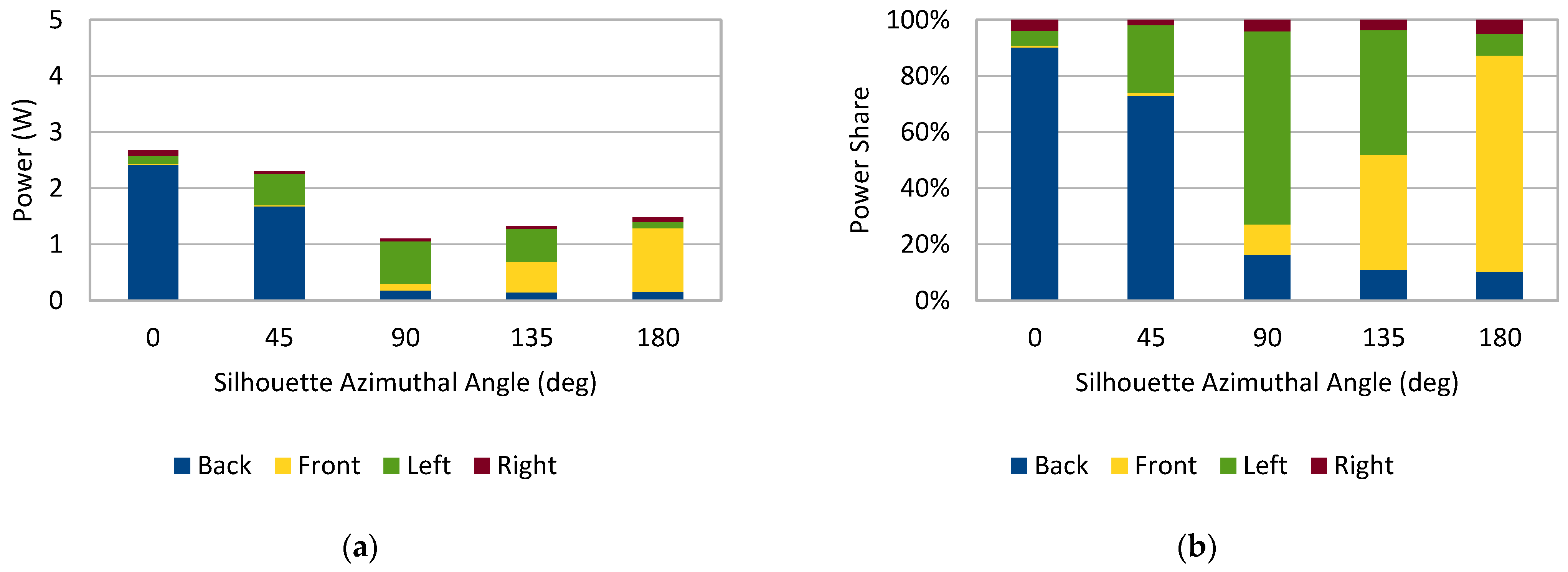

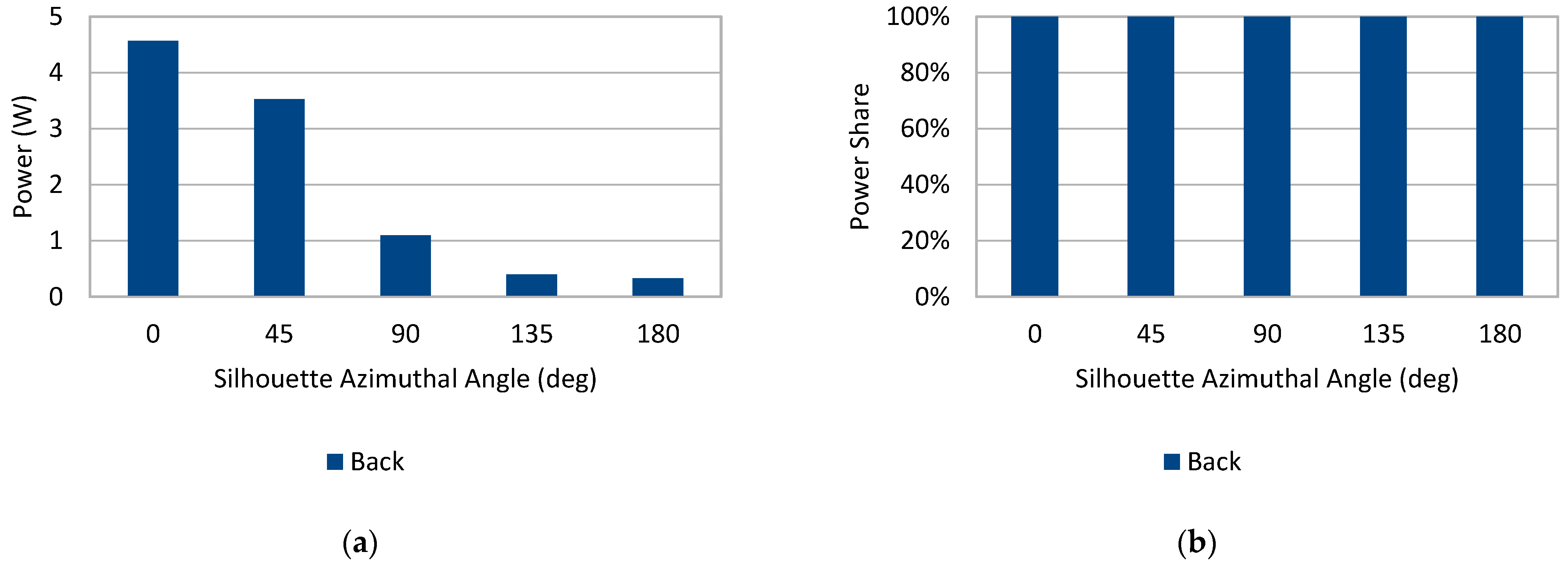
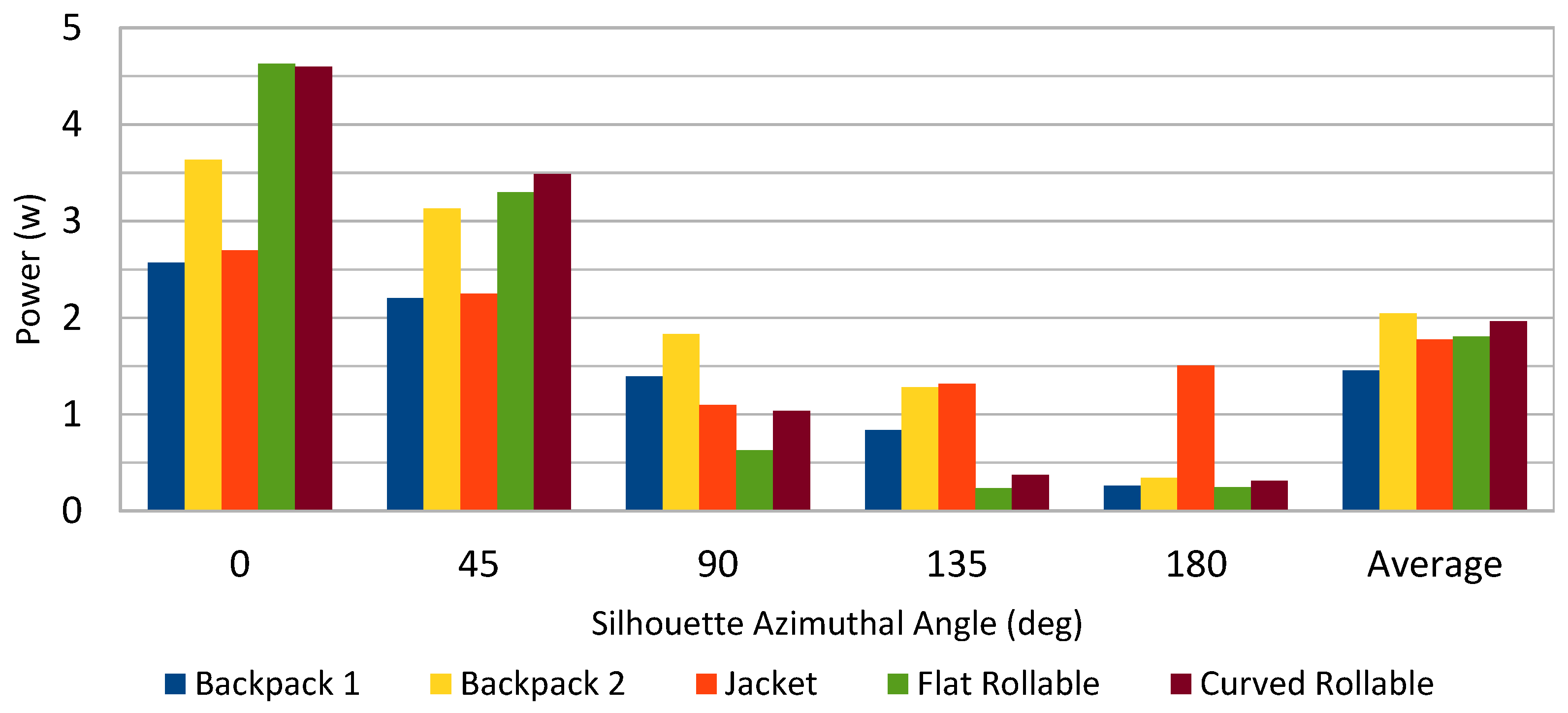
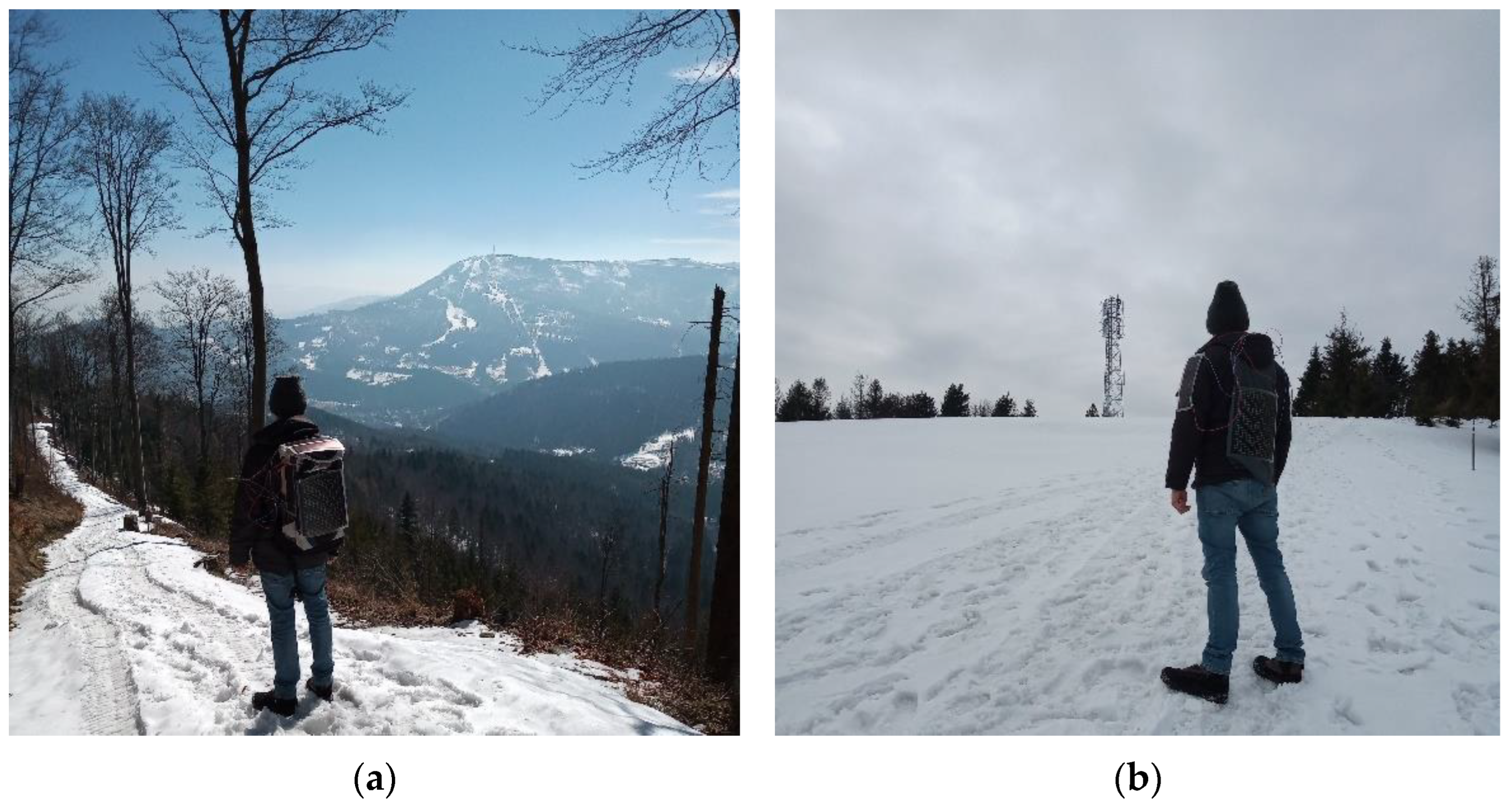
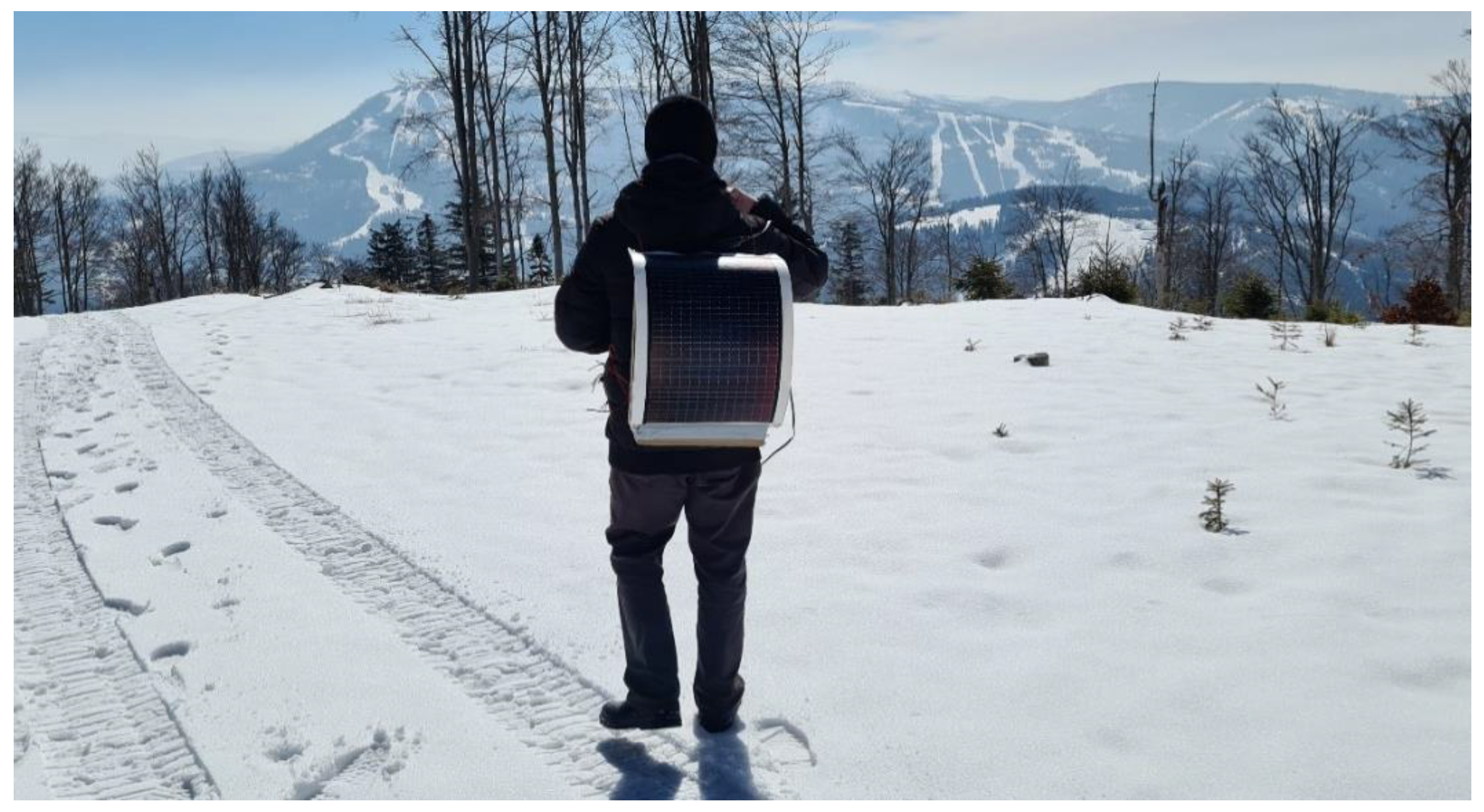
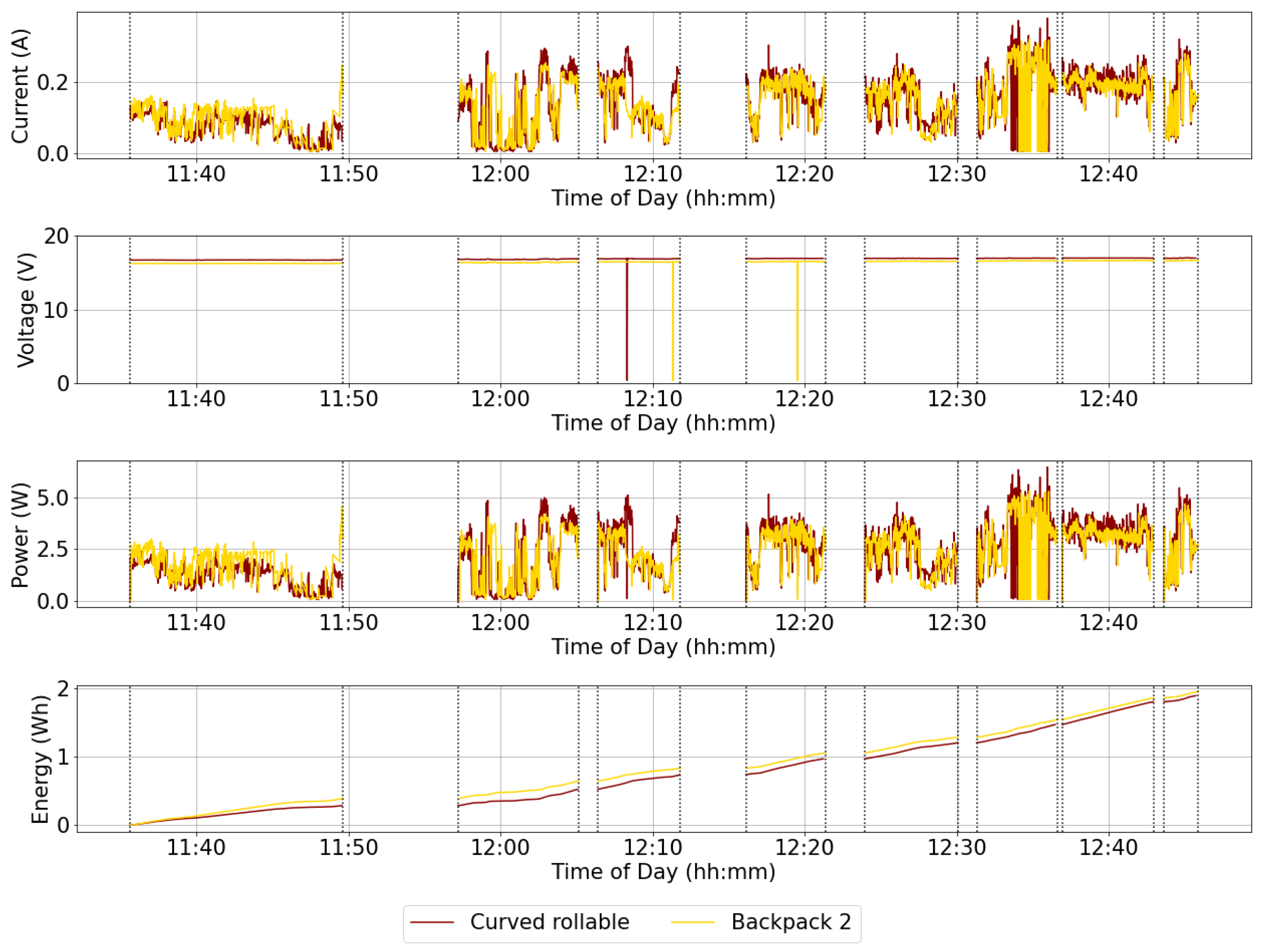

| Application and Supply Power | Analyzed Parameters | Study Conditions | |
|---|---|---|---|
| Páez-Montoro et al. [9] | Vital function monitor (VFM), bracelet 5.5 mW | Current Operating time State of charge | Different lighting conditions and test scenarios |
| Ostfeld et al. [10] | VFM, bracelet 10 mW | Current, Voltage Capacity Operating time | Different lighting conditions |
| Mohsen et al. [11] | VFM, bracelet 64.68 mW | Voltage Operating time | Single case |
| Jokic et al. [12] | VFM, bracelet below 1 mW | Voltage Power | Different lighting conditions |
| Castillo-Atoche et al. [13] | IoT cardiac arrhythmia detector | Operating time (calculated theoretical) | Single case |
| Dionisiet et al. [14] | VFM, t-shirt 17 mW | Current Power | Different weather conditions Two panel orientations Different Sun azimuth angles |
| De Fazio et al. [15] | VFM, jacket 17 mW | Current Power | Various harvesters Outdoor (different weather conditions) and indoor |
| Bibbo et al. [16] | Accident Detection System, bicycle helmet | Voltage Current | Outdoor (sunny weather) and indoor |
| Başoğl et al. [17] | Camping application, backpack | Power | Outdoor and indoor |
| Taverne et al. [18] | Mobile phone charger, backpack | Current Capacity | Different weather conditions |
| Bagci et al. [19] | Mobile phone charger, bag | Irradiance Current Power | Different lighting conditions Three different PV system architectures |
| Brogan et al. [21] | Mobile phone charger, jacket | Power | TEGs and PV cells Four Sun azimuth angles Four panel orientations Different weather conditions |
| This work | Electrically heated clothing, jacket, backpack, rollable PV sheet | Current Voltage Power Energy (also including power losses) | Different weather conditions and test scenarios Six Sun azimuth angles Five different PV system architectures with equal active areas |
| Component | Operating State | Average Power Consumed (mW) | Share in Total Power Consumption (%) |
|---|---|---|---|
| µC with peripherals (I2C, ADC, SPI, PWM) | Active | 18.05 | 17.01 |
| BLE peripheral of µC | Periodic transmission | 0.05 | 0.04 |
| SD card | Periodic writing | 5.53 | 5.21 |
| Battery charge monitor with measurement amplifier and buffer | Continuous acquisition | 6.16 | 5.81 |
| I2C multiplexer | Active | 0.06 | 0.05 |
| Temperature and air humidity sensors (7 pieces) | Periodic measurement | 0.29 | 0.27 |
| Temperature and air pressure sensor | Periodic measurement | 0.08 | 0.08 |
| Accelerometer and gyroscope | Continuous acquisition | 3.99 | 3.76 |
| Light intensity sensor | Periodic measurement | 0.09 | 0.09 |
| Pulse oximeter | Periodic measurement | 37.66 | 35.48 |
| Skin resistance sensor | Continuous operation | 25.20 | 23.74 |
| Current sensing amplifiers (2 pieces) | Continuous operation | 2.02 | 1.90 |
| LDO regulators (2 pieces) | Continuous operation | 2.87 | 2.70 |
| Voltage pre-regulator | Continuous operation | 2.52 | 2.37 |
| Battery voltage comparator | Continuous operation | 1.58 | 1.48 |
| Heating Power (W) | Operating Time Share (%) |
|---|---|
| 100 | 2 |
| 80 | 2 |
| 60 | 7 |
| 40 | 7 |
| 20 | 7 |
| 0 | 75 |
| Parameter | Value |
|---|---|
| Nominal voltage | 18.175 V |
| Maximum charge voltage | 21.0 V |
| Cut-off voltage | 12.5 V |
| Maximum discharge current | 8.0 A |
| Maximum discharge power | 100 W |
| End-of-life energy capacity | 101 Wh |
| Internal resistance | 100 mΩ |
| Weight | 530 g |
| Symbol | Active Area (cm2) | Maximum Power Point Voltage (V) | Maximum Power Point Current (mA) | Maximum Power (W) |
|---|---|---|---|---|
| P7.2-75F | 172.1 | 7.2 | 120 | 0.86 |
| PT15-75 | 172.1 | 15.4 | 50 | 0.77 |
| PT15-300 | 739.5 | 15.4 | 200 | 3.08 |
| R7 | 1416.0 | 15.4 | 450 | 6.93 |
| Configuration | Module Location | Active Area (cm2) | Figure | ||||
|---|---|---|---|---|---|---|---|
| Back | Top | Left | Right | Front | |||
| Backpack, Option 1 | PT15-300 | × | 2 × P7.2-75F | 2 × P7.2-75F | × | 1428 | Figure 6a |
| Backpack, Option 2 | PT15-300 | 2 × P7.2-75F | PT15-75 | PT15-75 | × | 1428 | Figure 6b |
| Rollable, Flat | R7 | × | × | × | × | 1416 | Figure 7a |
| Rollable, Curved | R7 | × | × | × | 1416 | Figure 7b | |
| Jacket | PT15-300 | × | PT15-75 | PT15-75 | 2 × P7.2-75F | 1428 | Figure 8 |
| Experiment No. | Start Time | End Time |
|---|---|---|
| 1 | 10:00 | 10:31 |
| 2 | 11:54 | 12:14 |
| 3 | 13:48 | 14:11 |
| 4 | 15:28 | 15:46 |
| 5 | 17:09 | 17:29 |
| Configuration | Total Test Duration (min:s) | Energy Change (Wh) | Average Power (W) |
|---|---|---|---|
| Backpack 2 | 51:40 | 1.950 | 2.264 |
| Curved rollable | 51:35 | 1.891 | 2.199 |
| Configuration | Total Test Duration (min:s) | Energy Change (Wh) | Average Power (W) |
|---|---|---|---|
| Jacket | 27:25 | 0.384 | 0.840 |
| Curved rollable | 27:35 | 0.388 | 0.844 |
| Weather Conditions | Rated Heating Power | Operating Time (h:min) | |||||
|---|---|---|---|---|---|---|---|
| Continuous Heating, 100% Rated Power | Continuous Heating, 20% Rated Power | Heating Power Profile | |||||
| Without PV | With PV | Without PV | With PV | Without PV | With PV | ||
| Small overcast | 100 W | 0:57 | 0:59 (+2.3%) | 4:53 | 5:31 (+13%) | 8:03 | 9:57 (+24%) |
| 76 W | 1:16 | 1:19 (+3.1%) | 6:26 | 7:34 (+17%) | |||
| Full overcast | 100 W | 0:57 | 0:58 (+0.8%) | 4:53 | 5:06 (+4%) | 8:03 | 8:37 (+7%) |
| 76 W | 1:16 | 1:17 (+1.1%) | 6:26 | 6:49 (+6%) | |||
Publisher’s Note: MDPI stays neutral with regard to jurisdictional claims in published maps and institutional affiliations. |
© 2022 by the authors. Licensee MDPI, Basel, Switzerland. This article is an open access article distributed under the terms and conditions of the Creative Commons Attribution (CC BY) license (https://creativecommons.org/licenses/by/4.0/).
Share and Cite
Pękosławski, B.; Marciniak, P.; Starzak, Ł.; Stawiński, A.; Bartkowiak, G. Power Supply and Control Unit for Actively Heated Protective Clothing with Photovoltaic Energy Harvesting. Energies 2022, 15, 5656. https://doi.org/10.3390/en15155656
Pękosławski B, Marciniak P, Starzak Ł, Stawiński A, Bartkowiak G. Power Supply and Control Unit for Actively Heated Protective Clothing with Photovoltaic Energy Harvesting. Energies. 2022; 15(15):5656. https://doi.org/10.3390/en15155656
Chicago/Turabian StylePękosławski, Bartosz, Paweł Marciniak, Łukasz Starzak, Adam Stawiński, and Grażyna Bartkowiak. 2022. "Power Supply and Control Unit for Actively Heated Protective Clothing with Photovoltaic Energy Harvesting" Energies 15, no. 15: 5656. https://doi.org/10.3390/en15155656
APA StylePękosławski, B., Marciniak, P., Starzak, Ł., Stawiński, A., & Bartkowiak, G. (2022). Power Supply and Control Unit for Actively Heated Protective Clothing with Photovoltaic Energy Harvesting. Energies, 15(15), 5656. https://doi.org/10.3390/en15155656









